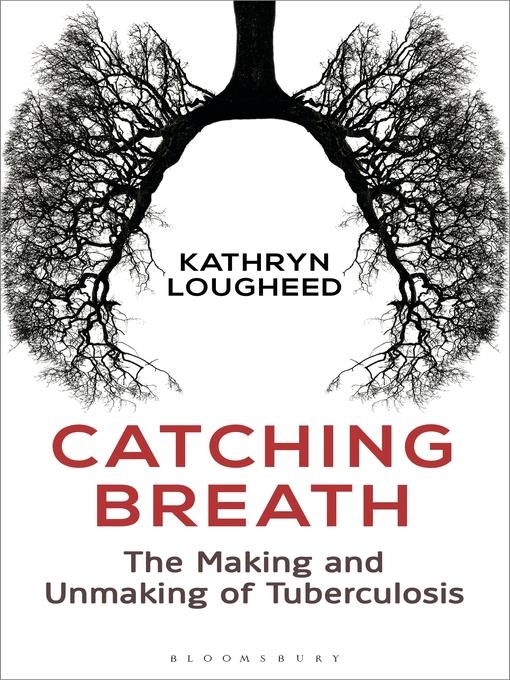
Catching Breath
The Making and Unmaking of Tuberculosis
درست کردن و از بین بردن مرض سل:
کتاب های مرتبط
- اطلاعات
- نقد و بررسی
- دیدگاه کاربران
نقد و بررسی

June 1, 2017
Causing 1.8 million deaths a year, a count that surpasses that of either malaria or HIV/AIDS, tuberculosis (TB) clocks in as the deadliest infectious disease. TB researcher Lougheed takes a closer look at this ancient yet potentially curable illness that continues to ravage humans around the world, particularly in areas with high poverty and limited access to health care. She has crafted a biography of TB, exploring its historical evolution and humans' response to it. Beginning with the work of molecular archaeologists to diagnose TB in ancient remains, Lougheed moves through history covering a variety of topics such as the migration of TB to all corners of the globe. According to the author, if we ever hope to overcome the disease, a comprehensive, collaborative approach combining science and efforts to combat poverty and improve access to health care will be necessary. With humor and clarity, she skillfully distills the complex science surrounding mycobacterium TB into a comprehensible narrative. VERDICT Sure to be appreciated by scientists as well as lay people interested in learning about this persistent disease. Make no mistake, however--this is serious science.--Ragan O'Malley, Saint Ann's Sch., Brooklyn
Copyright 2017 Library Journal, LLC Used with permission.

June 26, 2017
British medical researcher Lougheed creditably covers the long, painful history of tuberculosis, the world’s leading infectious killer, and the impressive recent advances in combatting it. The slow-growing and tough TB bacterium has infected humans since prehistory, but our immune system largely kept it under control up until the industrial revolution, when humans packed into cities and their health and immune systems declined. Improvements in public health after 1900 reduced infections, and it was widely believed that anti-TB antibiotics—which were developed after just after WWII—would eliminate the threat. But resistance appeared; widespread poverty in the developing world, combined with other diseases attacking the immune system such as HIV, has produced a worldwide epidemiological crisis. Lougheed delivers an expert account of this history, although her efforts to enliven a dismal subject with cheerful anecdotes and jokes do not always succeed. She is at her best when describing the research done in the late 20th and early 21st centuries. Dazzling technical advances, new drugs, the development of genomics, insights into the bacterium’s metabolism, and massive but halting political efforts may eventually turn the tide, but as Lougheed writes, TB is “very much a disease of the present and, sadly, the future.”

July 1, 2017
An exegesis on tuberculosis, a scourge that continues to threaten humanity: in 2015, there were 10.4 million new cases and 1.4 million deaths.London-based microbiologist Lougheed left the TB field after years of drug research that yielded few results. Indeed, her text makes clear that Mycobacterium tuberculosis is a bug that has co-evolved with humans since the birth of our species, acquiring extraordinary survival strategies. When the bugs land in a lung, the immune system sends macrophages to engulf and eat them, but they convert the macrophages to squats and live on various immune cell lipids. In turn, these infested macrophages group into granulomas that cluster in the lung, each with its own ecology. Further complicating the problem of combatting the disease is the fact that M. tuberculosis has an especially thick cell wall. Antibiotics only work against actively growing cells, so if the TB bug is sleeping, it can persist and then become the source of reactivation of a latent infection. Then there are the bugs with mutations that have resulted in multiply drug-resistant TB. Lougheed examines all these microbe-immune system interactions by dissecting current research papers as though readers were part of a weekly session of post-doctoral candidates keeping up-to-date. (The book could have used further editing for a general audience.) The author also explains the need for daily treatment regimens of multiple pills or injections that can last for years. As Lougheed notes, as well, TB flourishes in the presence of poverty, malnutrition, crowded living conditions, and co-infections. Unfortunately, this makes certain areas particularly vulnerable to the disease, including migrant and refugee camps. Not just a medical history, but a call to action. TB is not some quaint 19th-century romantic tragedy but rather a very real and present danger that requires investments in diagnostics and new drugs and greater attention to social and racial inequities.
COPYRIGHT(2017) Kirkus Reviews, ALL RIGHTS RESERVED.

September 1, 2017
Microbiologist Lougheed aims at rebranding TB as a modern monster rather than a mothballed relic of history. Her surprisingly entertaining discussion of tuberculosis is imbued with a quirky sense of humor, weird facts, lots of science, and a healthy respect for the illness. TB is a bigger killer than HIV/AIDS and malaria. It has gone by many names (consumption, the white plague, phthisis); been romanticized; and infected many famous figures, including Keats, Chopin, Gauguin, and Kafka. It is curable but hard to kill, and TB treatment is a bitch. Typical cases require 6 to 9 months of multiple medications; drug-resistant cases necessitate antibiotic therapy of 20 months or longer. HIV and poverty are TB's partners in crime. Lougheed's biography of this tough mycobacterium includes a discussion of the BCG vaccine, molecular archaeology, sputum culture, drug discovery, and GeneXpert molecular diagnostic testing. She also finds room for giant African pouched rats trained to sniff TB's smell print, an Egyptian mummy, and the peculiar susceptibility of elephants to tuberculosis. A successful introduction to the continued challenges presented by perhaps the deadliest infection in human history.(Reprinted with permission of Booklist, copyright 2017, American Library Association.)

























دیدگاه کاربران